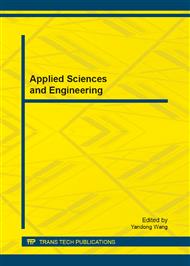p.337
p.342
p.346
p.351
p.356
p.362
p.367
p.372
p.376
Dynamic Analysis of a New Rotary Steerable Drilling Tool
Abstract:
This paper presents a novel Rotary Steerable System which used a universal joint to avoid the alternating press in the drilling process. The mechanics model is established on the basis of simplifying structure and supporting of rotation axis in directive RSS. Dynamic model of the offset mandrel is derived by means of Hamilton principle, which could be used to control system design. Location of offset force acting on the offset mandrel is optimized and vibration equation of universal joint is deduced by means of transfer matrix method, then the results of natural frequency are compared with the calculated results of the finite element to verify the kinetic model. Both dynamic model and simulation analysis are expected to provide useful good guidance for the design of control system, detail design, structure optimization and the dynamic vibration of the RSS.
Info:
Periodical:
Pages:
356-361
Citation:
Online since:
September 2012
Authors:
Price:
Сopyright:
© 2012 Trans Tech Publications Ltd. All Rights Reserved
Share:
Citation:


